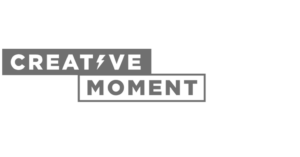Social media platforms remain at the forefront of communicating and reaching out to customers in 2025. They provide B2C brands unparalleled opportunities to engage with their audience, foster customer loyalty, and drive meaningful conversations. In 2025, a coherent, well-planned social strategy should not be seen as a competitive advantage—they’re now a necessity.
But what sets a B2C social media strategy apart? For us, it’s the emotional connections it creates with customers. Unlike the B2B market, where decisions are often driven by logic and data, B2C companies succeed by creating content that resonates at a personal level. Vibrant visuals, authentic storytelling, and direct engagement are crucial for building relationships with consumers. This, in turn, helps brands sell products based on shared values, loyalty, and emotion, not price.
However, staying ahead requires regular adaptation. Emerging trends, shifting consumer behaviours, and industry innovations mean yesterday’s tactics can quickly become outdated. By treating your marketing strategy as a living document that’s continually being reviewed, evolved, and updated, you ensure your brand remains relevant.
But whilst that all sounds reasonable, it doesn’t really explore how to deliver a killer strategy in 2025 if you’re a B2C brand. So that’s what we’re going to cover in the rest of this article. From understanding your audience to leveraging influencer collaborations, each section will aim to provide actionable insights to help your business stay ahead. Whether you’re aiming to boost visibility, build deeper emotional connections, or improve your conversion rates, this post equips you with the tools to succeed in the ever-changing social media arena.
Understanding Your Audience
A deep understanding of your audience is the cornerstone of any successful marketing strategy, not just a B2C one. All industries are now flooded with content, so sticking your marketing on broadcast is simply not going to cut it (and to be honest, it hasn’t for some time!). The key to capturing attention and fostering meaningful engagement lies in knowing exactly who your audience is and what they care about. And that means you need to start listening rather than telling.
Defining Your Target Audience
To start with, define who your target audience is. And be precise. It’s easy to say ‘our product is for everyone’, or something as equally vague. No product or service is for everyone though. And even if you have something to offer that most people can use, you’ll struggle to craft a message that appeals to them all.
But where to start?
We find focusing on the most basic demographic data is a great starting point. Think age, gender, and location. These are usually easy to answer and will likely highlight some obvious differences to dig deeper into. For example, does it make sense to deliver the same message to a 21-year-old and a 65-year-old. Possibly. But probably not.
This leads you onto the next level of questions. Values, interests, hobbies, and attitudes. When you ask why the same message probably wouldn’t work for a 21 and 65-year-old it likely comes down to their beliefs, experiences, and things that are most important to them at that stage of their life.
These factors drive a person’s decision-making process and what’s most important to them.
Finally, consider what motivates them. Is it cost, quality, speed, or customer service? Maybe none of those things. Maybe it’s ego, status, or lifestyle.
Once you’ve broken your customers down like this, you’ll likely have a few different categories of people to go after. Now you can start overlaying these with the behavioural data that’s most important to your campaign’s success, such as purchasing, engagement, following, commenting, or any other action you deem as valuable.
The point is, the more you know about your consumers, the better equipped you’ll be to create personalised marketing strategies. A tailored approach speaks to the individual, making them feel seen and valued, which can boost customer loyalty and increase conversion rates.
Utilising Social Listening Tools
Understanding your audience’s needs and desires also requires ongoing monitoring of their behaviour. More importantly, though, you need to understand their sentiment. Sentiment to your brand, your competitors, and the problem you solve. You also need to consider how events in the wider world might be impacting them.
Using social listening tools can help streamline this entire process by providing valuable insights into consumer trends, conversations, and sentiment. These tools track real-time discussions across social media platforms, helping you keep up to date on shifting consumer preferences.
By actively listening to your audience, you can identify pain points, address concerns, and even jump on emerging trends early. This responsiveness demonstrates that your brand is attentive and adaptable—critical qualities in the competitive B2C landscape.
Creating Customer Personas
Customer personas help bring together the findings from the above two steps and humanise your audience. These fictional but data-driven representations of your ideal consumers help you segment your audience more effectively. Personas should go beyond basic demographics; they should capture motivations, frustrations, goals, and behaviours that influence purchasing decisions.
Once you have a set of well-developed personas, you can align your content, messaging, and social media tactics with the needs and interests of your specific segments. For example, a persona targeting eco-conscious consumers may respond better to content that highlights sustainability initiatives, while a persona focused on tech enthusiasts may engage more with cutting-edge product features.
Leveraging Data for Personalisation
If you’ve been following along and undertaking the actions from the above points, you’re probably starting to see that data is a powerful tool in B2C marketing. Data has hopefully begun to take your initial hypothesis of who you think is your ideal customer and either confirmed or debunked those assumptions. What you’re left with are segmented audiences based on common interests, behaviours, and demographics.
With this, you can start planning highly personalised content that speaks to their individual needs. This level of personalisation isn’t just about addressing customers by name in emails though. It’s about crafting experiences that feel unique to them, whether through dynamic content on your website or personalised social media posts.
This level of personalisation strengthens your audience’s emotional connection with your brand, making them more likely to engage and convert.
Content Planning
Content is the vehicle through which your brand will communicate its values, showcase your products or services, and engage with your audience on a personal level. Content creation is no longer just about filling up a content calendar, however. It’s about storytelling that resonates, delivering value, and fostering connections that lead to customer loyalty.
Creating Engaging Content
The key to captivating your audience is crafting content that speaks to them on an emotional level. In 2025, storytelling continues to be a central tactic for B2C businesses. While informative content can educate, it’s emotional stories that truly engage. People connect with narratives that evoke emotions, whether it’s humour, inspiration, or relatability. Through storytelling, brands have the opportunity to humanise themselves, sharing their journey, values, and mission in a way that fosters empathy and strengthens bonds with consumers.
Storytelling should not only be about your brand—it should also focus on your audience. Share stories that reflect their aspirations, challenges, and experiences. When consumers see themselves in your content, they are more likely to develop an emotional connection, which is essential for building long-term customer loyalty.
Incorporating a variety of content formats—such as blogs, videos, and interactive posts—ensures that you maintain engagement across different social media platforms. Visual content like videos is particularly powerful when trying to grab attention and makes complex information digestible. Interactive content, such as polls, quizzes, and user-generated content, further fosters participation, making your audience feel involved in the brand story.
The Power of Content Calendars
A content calendar is an indispensable tool for ensuring that your B2C marketing strategy remains organised, timely, and consistent. Without a plan, missing key opportunities or letting content stagnate is easy. A well-structured content calendar also looks to the future so can anticipate important dates for each customer group. This in turn leads to another level of personalisation by hitting customers with seasonal messages that are relevant to them.
An often overlooked benefit of content calendars, however, are dates to avoid. Perhaps one group of customers is particularly sensitive to a certain date or time of the year. By being aware of these considerations in advance, you can avoid an embarrassing misstep in your broadcast schedule.
Content calendars also help in adapting your content to the unique requirements of each platform, whether it’s short-form posts on TikTok, longer blogs on your website, or visually driven content on Instagram.
Types of Content That Generate Engagement
Not all content is created equal when it comes to engagement. Some content types tend to generate more interaction and resonate better with B2C audiences. For instance, interactive content such as polls, Q&As, and user-generated content tends to drive higher engagement. These types of posts encourage audiences to participate, share their opinions, and feel involved in the brand experience.
Video content, especially short-form videos, is another high-engagement format. Platforms like TikTok and Instagram Stories are prime examples where consumers consume content and participate by creating responses, challenges, and reactions.
The power of video content remains undeniable, however, as it continues to drive conversion rates and brand awareness.
How to Craft Narratives That Resonate
To make your content truly resonate, it’s important to focus on your audience’s needs and desires. This is where you should refer back to your earlier work when you defined your customer audience groups. By understanding their pain points and aspirations, you can craft stories that will really hit home. For example, a brand in the health and wellness space might share stories about overcoming personal challenges, living a healthier life, or finding balance in a hectic world.
A stand-out example of this would be the John Lewis Christmas ads. Whilst most retailers were trying to sell products, John Lewis told a story of a young boy excited about Christmas, not for the presents he would receive, but for the ones he’d give. This message resonated at a deep, emotional level with audiences. It reminded them of what Christmas should be about by promoting the ideas of family, togetherness, and generosity. The result? John Lewis has secured a place in people’s minds that it’s a brand that believes in giving, not receiving.
Audience Engagement Strategies
As we said at the start of this post, it’s not just about broadcasting—it’s about fostering a two-way conversation that builds trust, loyalty, and deeper relationships. Social media platforms are designed to facilitate just this type of interaction, however. And this is what makes them essential when your trying to create meaningful connections with your audience.
Encouraging Two-Way Communication
To build a strong, loyal community, you need to encourage two-way communication. Responding to comments, liking and sharing user-generated content, and engaging in direct messages are all good starting points that create a sense of connection. But consumers need to really feel heard if they’re going to brand advocates. And to do this, you’ve got to open yourself up to honest feedback. This is possibly the most scary part of a successful social strategy, but it’s unavoidable. Brands who actively seek honest feedback from their customers not only generate unbelievable amounts of goodwill, they’re also gaining a goldmine of valuable data to improve their products or services.
Brand who action (or at the very least acknowledge) this feedback will i have made a huge step towards fostering the type of two-way communication we’re talking about.
Something quite unusual and unexpected can also happen when brands open themselves up to this kind of feedback. They show would-be customers how they deal with problems. Most customers are not daft. They know mistakes will happen. But seeing a brand that responds positively, engages with feedback, and adapts can build unbelievable levels of trust.
Utilising Interactive Features for Engagement
Interactive content is another excellent way to boost engagement, as it invites consumers to participate rather than passively consume actively.
Hosting live sessions—whether through live-streamed events, product demos, or behind-the-scenes looks at your brand—are the types of interactive posts that can really increase engagement. Live content creates a sense of exclusivity and urgency, encouraging viewers to tune in at specific times. This real-time interaction helps to form a more personal connection with your audience, making them feel like they are part of something special.
Handling Negative Engagement or Feedback
As touched on above, negative engagement or criticism, is going to happen, especially if you’re fostering two-communcation buy asking for feedback. How you handle it is the important thing, however. Instead of ignoring or deleting negative comments, address them. Acknowledge the concern, apologise if necessary, and offer solutions to resolve the issue.
Being transparent and responsive in these situations can turn a potentially damaging interaction into a positive one. When consumers see that a brand is willing to listen and take action, it can foster trust and loyalty. Brands that handle negative feedback with grace are more likely to maintain a positive relationship with their audience in the long run.
Building a Community Around Your Brand
By encouraging conversations, user-generated content, and collaborations with influencers, you can build an active community. And when consumers feel that they are part of a brand’s story, they are more likely to engage frequently and advocate for the brand in their social circles.
To build a strong community, consider encouraging consumers to share their experiences, tag your brand in their posts, and participate in brand-sponsored activities or challenges. The more your audience feels like they are a part of your journey, the more loyal and engaged they will become.
Measuring Success and ROI
Whilst everything we’ve spoken about so far might sound great, results are all that really matters. So you’ve got to make sure you’re measuring the success of your social strategy from day 1. In fact, you need to be measuring it from before day 1 by having a clear benchmark of where you are right now, where you want to get to, and by when.
Without clear metrics, and without knowing which metrics matter to your objectives, it’s impossible to know what’s working and what needs refinement.
When picking what metrics to track, we always ask ‘What business questions do we need to answer and what metric will answer it’. It’s all too easy to build a fancy looking report with lots of graphs, charts, and numbers, but if these don’t answer a business question, they’re just fluff.
Setting Clear Objectives and KPIs
Before diving publishing a single post, it’s essential to define what success looks like. This begins with setting clear objectives aligned with broader business goals. This might be increasing brand awareness, boosting customer loyalty, driving sales, or improving conversion rates. Each of these objectives should have specific, measurable outcomes tied to them.
KPIs are the metrics that allow you to track your progress towards these objectives. Common KPIs include engagement rates (likes, comments, shares), reach (how many people are seeing your content), click-through rates (CTR), conversion rates (how many people take action after engaging with your content), and return on ad spend (ROAS). By focusing on the right KPIs, you can determine which aspects of your strategy are working and which need adjustment.
Utilising Analytics Tools
To accurately measure success, you need to ensure you have the right analytics tools in place. Platforms like Google Analytics, Sprout Social, Hootsuite, and Facebook Insights provide in-depth reporting capabilities allowing you to track real-time social performance. These tools offer insights into audience behaviour, content performance, and conversion data, helping you make informed decisions.
For instance, Google Analytics can track how social media traffic contributes to website visits, form submissions, or product purchases. Hootsuite and Sprout Social offer social listening and engagement analytics, allowing you to track mentions, sentiment, and real-time interactions across multiple platforms.
Consider what you need to know first, then identify the tools that will provide this information.
Adapting Your Strategy Based on Data
The beauty of digital marketing is the ability to make quick, data-driven adjustments. As you monitor your KPIs, it’s crucial to identify patterns and trends that signal what’s working and what isn’t. For example, if engagement rates are low, you’ll want to adapt your content or posting schedule. On the other hand, if a product is really blowing up and driving far higher conversions, you might consider focusing on it more to increase its amplification.
Also, rember how we said your Content Calander should be a living document? Well data isn’t just for assessing past performance. It’s essential for future planning. Use your findings to inform your content strategy, refine audience targeting, and optimise campaigns. Regular reviews and data-driven adjustments help ensure that your strategy remains agile and responsive to shifts in consumer preferences and platform algorithms.
Evaluating Long-Term Success
While immediate metrics like engagement and conversions are important, you should also assess the long-term impact of your social strategy. Brand awareness, customer loyalty, and reputation growth are harder to quantify but equally vital for sustained success. Metrics like customer lifetime value (CLV), brand sentiment, and repeat purchases provide insights into the long-term benefits of your social media efforts.
Moreover, analysing how your brand is perceived in the broader market and across various social media platforms can help adjust your brand positioning. Engaging with loyal followers and nurturing relationships will contribute to long-term customer retention, which is far more valuable than short-term sales spikes.
In short, don’t just look to ‘hard’ metrics like sales and revenue whilst forgetting ‘softer’ metrics like brand awareness. As the saying goes, ‘The best time to plant a tree was 20 years ago. The second best time is now.’










